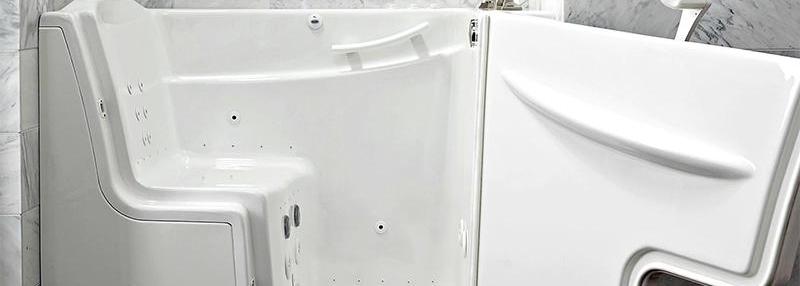Termites might seem like a rather unlikely problem to have, but as it turns out, termites structurally damage over $5 billion every year. There really are more cases than you’d assume.
Termites have the ability to destroy your house and turn your life upside down. These ruthless bugs gnaw through the wooden base of your home and work their way up until your house is no longer fit for living in. But if your home gets destroyed and you have homeowner’s insurance, you’re fine – right? Wrong.
Since termites typically cause irreparable damage to a building’s structure, homeowner’s insurance is purposely created to avoid covering any building’s damage costs associated with termites. Since insurance won’t help you, it becomes your responsibility to protect your home and prevent termites from taking over.
Want to know how to ward off termites? Here’s everything you need to be aware of to protect your house.
Termite Myths
There seem to be a few misunderstandings regarding termites and how to deal with them. Most people have a certain image in their head of how to deal with termites, most likely based upon a story of a friend of a friend of theirs who dealt with an infestation. These myths are not reliable sources of advice or information.
When it comes to countering termite infestation, you need to be armed with accurate, up-to-date information on the latest and most efficient preventative measures and treatments at your disposal. While pest control companies will provide you with options, they’ll likely rip you off for their services.
Here are some of the most common termite myths that you should be aware of before you begin looking into the best treatment for your home.
DIY Treatments Work
You can find plenty of do-it-yourself termite treatments at your local hardware store, but rest assured that they aren’t very good quality. People who opt for a DIY option may save money initially, but when the cardboard bait stations give out and need to be replaced, the DIYers may end up wishing that they’d gone for another option instead.
Spot Treatments Are Worth It
Only treating termite-infested spots doesn’t cover all your bases. Spot treatments can be great if you’re planning on targeting a localized section, however, it’s difficult to verify what proportion of a section is infested. Pest control companies that usually provide these services typically provide a limited time warranty that doesn’t protect you from the damage of a second wave of termites.
Treatment Is Necessary Because You Have Termites
Termites can be found in more places than you’d imagine. Don’t panic – this doesn’t necessarily mean that your home is under attack, but you should always be on the lookout for signs that it may be. You may very well be targeted by termite services that will try to convince you to waste your money on their unnecessary services. Just because there are termites nearby in your neighborhood, doesn’t mean you have to jump the gun and spend your money on services you don’t need.
Understand the Different Types of Termites
North America is home to approximately 50 termite species. However, only a select few types of termites have the ability to cause structural damage. It’s important to know which type of termite you’re dealing with.
Subterranean Termites: Many subterranean termite species live in North America. These menacing wood-destroying bugs tend to infest a home and destroy from the ground up, ultimately rendering the targeted home inhabitable. If there isn’t a wooden part of the house that is directly touching the ground, the termites are able to build tubes in the earth that follow the walls and foundations. This type of termite are most commonly found in Southern states, as they’re drawn to warmer soil and higher humidity.
Drywood Termites: This type of termite lives within the wood which houses their nest. They are larger and darker in appearance than subterranean termites, and can be much more dangerous to deal with. According to the University of Florida, the western drywood termite can not only damage homes, but can consume whole furniture, books, and other bits of wood. This specific type of termite are native to Florida and along the Gulf Coast.
Dampwood Termites: These termites aren’t as bad as other types, and only cause occasional structural damage. However, they are certainly the largest type of termite found in North America, measuring a whopping half an inch long. Dampwood termites – as you might have guessed – are drawn to damp areas with high humidity levels. Therefore, they don’t stay underground but rather choose to live in damp rotten wood or timber lying on the ground.
Extermination Methods To Consider
Preventative measures such as controlling the moisture in and around your home, looking out for warning signs, and getting rid of any wood that’s directly touching the ground can greatly reduce your chances of being infested by termites.
However, if you’re about to build a new home or need to treats an active infestation, it’s important to know what your options are in terms of proper treatment.
Baiting Systems
One of your options for putting a stop to termites is by luring them with a bait system. These bait systems are made up of insect growth regulators (noviflumuron, hexaflumuron), which is extremely toxic. Worker termites end up feeding on the bait, and carry this slow-acting termiticide back to the colony, which ultimately kills the entire swarm.
Self-contained bait stations are sometimes installed before new traps are constructed. They’re helpful for controlling all types of subterranean termites, however, they usually take longer to work. As well, bait station systems generally cost more, as they require frequent maintenance.
Liquid Termiticides
Pest control services typically stick to two types of termiticides: repellant or non-repellent solutions.
What’s the difference? Repellent termiticides contain pyrethroids, which are sold as brands like Biflex, Demon and Dragnet.
Non-repellant solutions are composed of chemicals like chlorfenapyr, fipronil and imidacloprid, which are carried by worker termites back to the colony, disrupting the termites’ nervous systems and ultimately wiping out the colony. Phantom, Premise, and Termidor are all non-repellant solutions that can be found at your local store. They are great products to have on-hand, as they work rapidly and have a shelf life of up to five years.
Spot Treatments, Foams and Dusts
Spot treatment is an effective way for eliminating localized infestations of either drywood or dampwood termites by directly targeting the affected wood. If your goal is to eliminate an infestation, your pest control provider needs to pinpoint the problem zone and use the proper application method. This can involve drilling through the wood so that the active ingredient reaches the target. The efficacy of spot treatments varies, and work best when combined with other preventative measures, like barrier methods or bait stations.
Plan Of Action
Worried about termites infesting your home? It’s important to know your options. Do online research to figure out what kind of treatment is right for your home and your family, and understand which kind of termites your home may be susceptible to depending on your region.
If not handled properly, a termite infestation has the potential to ruin your house and supremely complicate your life. If you think your home is threatened, it’s suggested to consult a professional exterminator as soon as possible so that they can size up your situation and provide suggested treatments.


